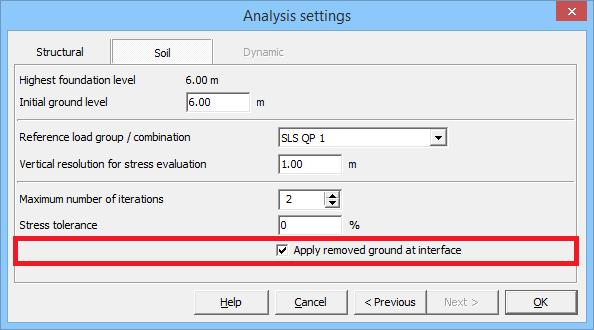An excavation means that the soil was consolidated, resulting in less settlement. By default, Diamonds will not take the excavation is not taken into account (= safest approach). It is up to the user to do the neccessary.
Necessary adjustments
- Enter the soil layers starting from the original soil level.
- Define the level of the ground water.
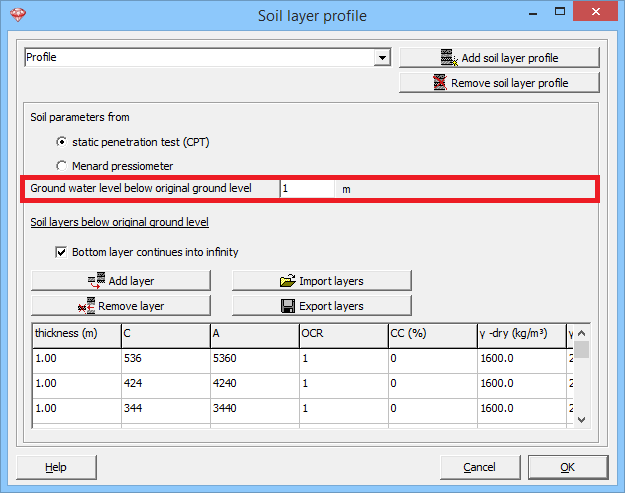
Note: the groundwater level is only used to determine if Diamonds has to calculate with the dry or wet selfweight of the soil. It is up to the user to define water and soil pressures. - The swelling index A should be larger than the compression index C.
This can easily be done using excel.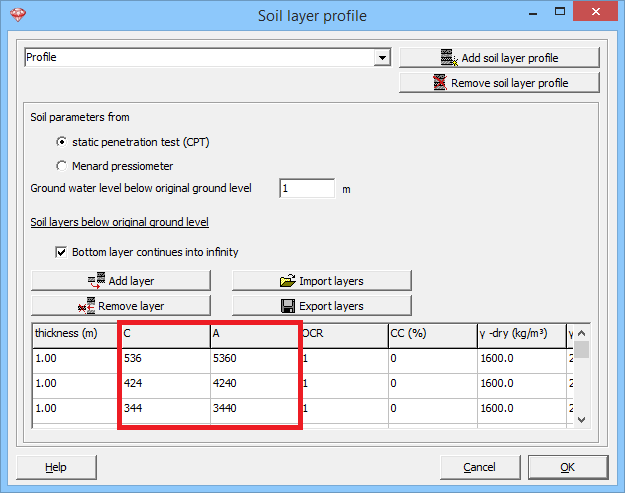
- If the soil is almost immediately reloaded after excavation, the preload due to the excavation will still be completely present in the soil grains. The ground can not swell between the two phases of execution. If there is a long time between excavation and re-loading, the soil will have time to relieve and start to swell. The ground is relaxed again and there is no more preload.How fast this goes depends on the drainage capacity, in other words, how quickly the stress drop in the pore water is transferred to the soil grains. The drainage capacity depends on the type of soil, the layer thickness and the layer depth. Sand is considered to drain well, the ground relaxes faster and the preload is faster away. Clay, on the other hand, has a small drainage capacity and will retain the preload longer. Likewise, deeper layers will drain more slowly than upper layers and thin layers relax faster than thick layers.
Generally, if you want to the excavation to be taken into account, the drainage coefficient CC must be << 100% (mostly set to 0% for all soil layers). This can easily be done using excel.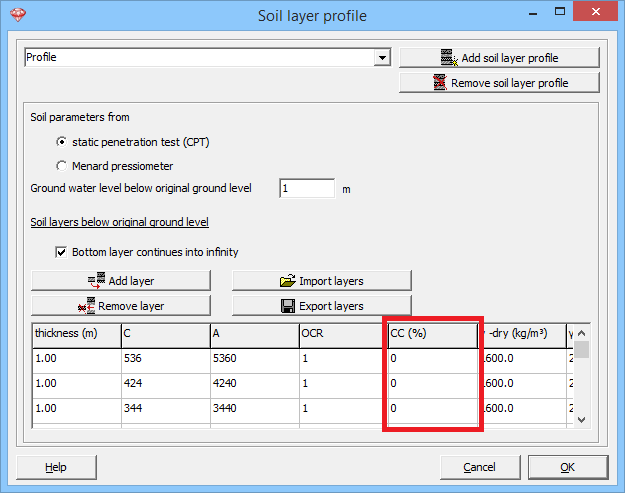
- Set the reference load group / combination to SLS QP 1. Make sure that the combinations SLS QP1, doesn’t contain upward (water)pressure. If so, choose SLS QP 2 or 3, without the upward (water)pressure.
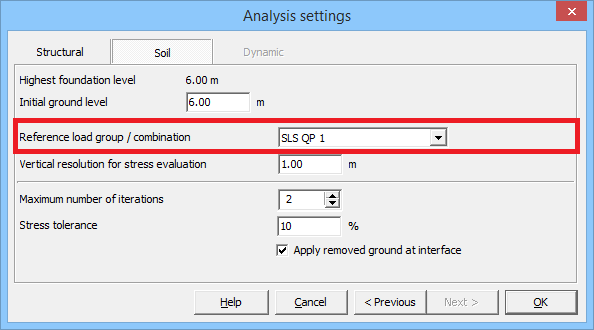
Optional adjustments
- Has the soil ever been préloaded with a load different from the escavation? For example: an old building that was demolished or a pile of sand that was removed.
Then define the overconsolidation ratio OCR > 1.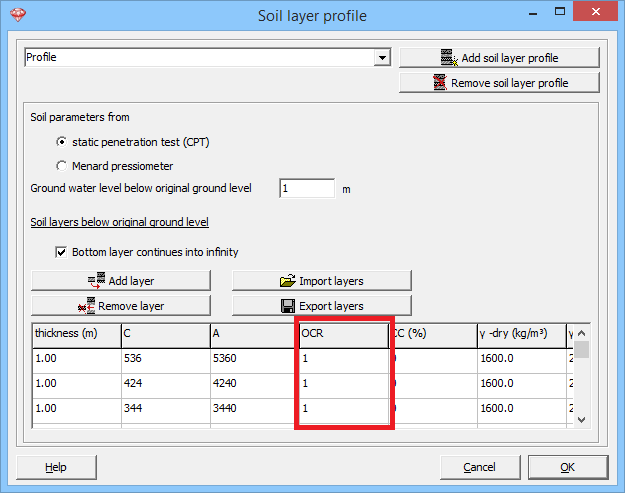
- Uncheck the option ‘Bottom layer continuous into infinity’.
By default Diamonds will assume that the bottom layers continuous to a depth of 200m. In some cases this gives conservative results. When you uncheck this option, Diamonds will stop the calculations after the last layer. This actually means implying there is a very stiff material (like rock) below the last soil layer.

- Set the stress tolerance between 0 and 20%.
According to EN 1997-1-1 §6.6.2 (6) teh calculation may be ended when the effective vertical stress due to the foundation load is 20 % of the effective overburden stress. Soil reports usually use 10%. Diamonds default uses 0%, but the user can change it.
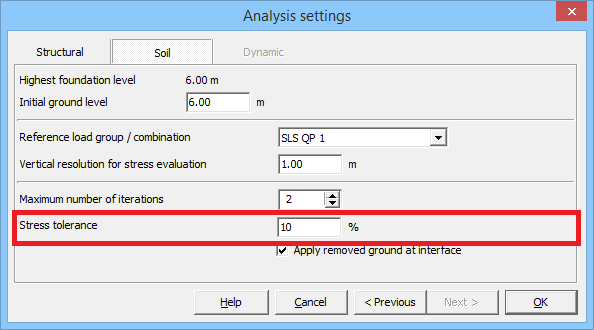
- Check the option ‘Apply removed ground at interface’.
